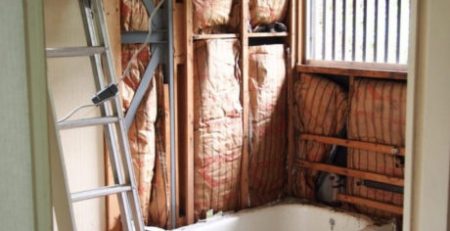How to Fix Your Leaking Shower
You don’t have to go in search of trained experts to repair virtually everything that goes wrong within your home. Believe it or not, you can get some of these things repaired by yourself. Most of the time, you need some measure of expertise in order to get some repairs done, however, there are times where a simple common sense and a bit of guidance is all you need for the easy to fix jobs.
In this topic, we will focus on damaged or leaking shower within your bathroom. The truth is, the job of fixing leaking shower is relatively easy. Here’s a simple guide that can help you quickly repair leakage within your bathroom.
Fill the gaps with Silicone Sealant
 First of, make sure that the surfaces within your shower are clean and dry then run a generous amount of silicone along the gaps within your shower, to completely cover it. It doesn’t have to look neat at this point. To scrape off any excess, use an icy pole stick (some people use their finger) then wipe the stick on a rag as you go. This method does two jobs – it pushes the silicone down into the gap to improve the seal and it removes the excess silicone to make it look neat.
First of, make sure that the surfaces within your shower are clean and dry then run a generous amount of silicone along the gaps within your shower, to completely cover it. It doesn’t have to look neat at this point. To scrape off any excess, use an icy pole stick (some people use their finger) then wipe the stick on a rag as you go. This method does two jobs – it pushes the silicone down into the gap to improve the seal and it removes the excess silicone to make it look neat.
Clean up the remaining silicone sealant using Sugar Soap
 Wipe down the newly sealed joint smoothly with a cloth after spraying it with sugar soap. Once you’ve done that, go back to clean up any bits you’ve missed. For the best results, hold the cloth onto the joint with pressure consistently and wipe it downwards in one fluid smooth motion. This should give it a clean look after you’ve sealed the gaps within the shower area.
Wipe down the newly sealed joint smoothly with a cloth after spraying it with sugar soap. Once you’ve done that, go back to clean up any bits you’ve missed. For the best results, hold the cloth onto the joint with pressure consistently and wipe it downwards in one fluid smooth motion. This should give it a clean look after you’ve sealed the gaps within the shower area.
Remove the clogs
 Clogged hole can be responsible for leaking shower. Deposit of lime and a host of other minerals can build up over time. You can shut off the water supply by turning off the main water line to the whole house or the bathroom’s shutoff valve.
Clogged hole can be responsible for leaking shower. Deposit of lime and a host of other minerals can build up over time. You can shut off the water supply by turning off the main water line to the whole house or the bathroom’s shutoff valve.
The shower head needs to be soaked to get rid of the mineral and lime deposits. First of all, it should be removed from the shower fixture.
To do this, unscrew the faceplate first. You can also remove the whole shower head if you find it difficult to unscrew the faceplate. The model and make of the shower can determine how you go about this removal.
Undo the screws that surround the shower head or shower head faceplate. Then, pull the faceplate or turn it anticlockwise to get it removed.
Soak in Vinegar or other Calcium, Lime & rust remover
After removing the shower head, get it soaked in vinegar or other CLR remover for up to 8 hours. Make sure you pour the vinegar or CLR Remover in a big enough container that can conveniently contain the shower head. You can soak the shower head in the bathtub if there is spare bathroom at home.
The vinegar or CLR Remover penetrates into the deposits clogged in the shower head and dissolves them.
Remove the left over clog
After the white vinegar treatment for 8 hours, remove the shower head and scrape off any leftover deposit. You can use a small nail or toothpick for this purpose. Look for a nail that fits perfectly in their holes on the shower head. Afterwards, use stiff plastic brush to scrub the faceplate clean.
After applying the above treatment as prescribed, it is time to check if the effort paid off. First of all, attach the shower head or the faceplate back to the shower fixture. Switch on the water supply and turn the faucet on.
Check if there is still leakage. If not, then the problem is solved. If the solution above does not work, it simply means you should try out another method of fixing the leaking shower or consult an expert like Giuselle Bathrooms.
Check the rubber washer
If the above process does not work, it is possible the leakage is due to worn rubber washer. The “O ring” or the washer can crack after many years of use and this can cause shower leakage, since water seeps easily through the cracks. All you have got to do it so to replace the washer. First find out if the leakage is coming from the hot-water or cold-water valve if the shower faucet is the compassion faucet type which has two faucets handles. Due to its complicated nature, this is where we recommend that you seek out advice from an expert like Giuselle Bathrooms, your plumber or from your local Bunnings.



